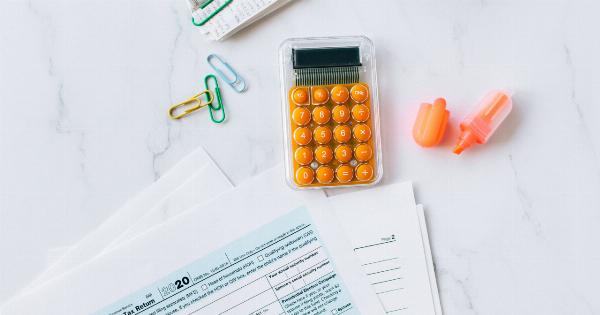Obsessive-Compulsive Disorder (OCD) is a chronic mental health condition that affects millions of people worldwide.
It is characterized by recurrent, intrusive thoughts (obsessions) and repetitive, ritualistic behaviors (compulsions) that individuals feel compelled to perform. While there are various treatment options available, some cases of severe OCD may not respond adequately to traditional therapies.
However, there is a breakthrough treatment known as Deep Brain Stimulation (DBS) that has shown promising results in managing severe OCD symptoms. This article explores the use of DBS as a revolutionary treatment for severe OCD.
Understanding OCD
In order to fully grasp the significance of DBS as a groundbreaking treatment for severe OCD, it is essential to have a thorough understanding of the disorder itself.
OCD is a complex psychiatric condition that affects individuals of all ages and backgrounds. It can manifest in a multitude of ways, with the common feature being the presence of distressing obsessions and compulsions that significantly impair daily functioning.
The Limitations of Traditional Treatment Approaches
Traditionally, OCD has been treated using a combination of therapy and medication. Cognitive-behavioral therapy (CBT), specifically exposure and response prevention (ERP), is considered the gold standard in psychotherapy for OCD.
Additionally, selective serotonin reuptake inhibitors (SSRIs) are commonly prescribed medications that help alleviate symptoms. While these treatments are effective for many individuals, severe cases of OCD often struggle to respond optimally, leaving patients with limited options for relief.
What is Deep Brain Stimulation?
Deep Brain Stimulation (DBS) is a neurosurgical procedure that involves implanting electrodes into specific areas of the brain to modulate abnormal electrical signals.
It is primarily used to treat movement disorders such as Parkinson’s disease, but in recent years, its application has extended to psychiatric disorders like severe OCD.
How Does DBS Work for OCD?
The exact mechanisms by which DBS alleviates OCD symptoms are still being explored, but the procedure involves placing electrodes in specific brain regions that are hyperactive in individuals with OCD.
These regions include the anterior cingulate cortex (ACC), the ventral capsule/ventral striatum (VC/VS), and the subthalamic nucleus (STN). Once the electrodes are in place, they are connected to a neurostimulator device, similar to a pacemaker, which delivers electric pulses to modulate the abnormal brain activity.
The Clinical Evidence
The use of DBS for treating severe OCD is supported by an increasing body of evidence. Clinical trials and studies have demonstrated remarkable improvements in OCD symptoms in patients who have undergone DBS.
Case Studies
Several case studies have highlighted the efficacy of DBS in treating severe OCD. One notable case involves a 32-year-old woman who had been suffering from debilitating OCD since childhood.
Despite trying various therapies and medications, her symptoms remained severe, affecting her ability to work and maintain relationships. After undergoing DBS, she experienced a dramatic reduction in obsessions, compulsions, and anxiety levels. She regained control over her life and could engage in previously avoided activities.
Potential Benefits of DBS for OCD
DBS offers several potential benefits for individuals with severe OCD:.
- Reduced Obsessions and Compulsions: DBS has been shown to significantly reduce the frequency and intensity of obsessions and compulsions, providing patients with much-needed relief from distressing thoughts and behaviors.
- Improved Quality of Life: By alleviating OCD symptoms, DBS can enhance overall quality of life by enabling individuals to engage in activities they previously avoided due to the disorder’s restrictive nature.
- Long-Term Results: Unlike some traditional treatments which may lose effectiveness over time, DBS has shown sustained benefits in managing severe OCD symptoms over the long term.
- Potential to Reduce Medication Dependency: For individuals heavily reliant on medication to manage their OCD, DBS may offer an alternative that reduces the need for high doses or multiple medications.
Potential Risks and Considerations
While DBS holds immense promise as a breakthrough treatment for severe OCD, it is important to acknowledge the potential risks and considerations associated with the procedure:.
- Surgical Risks: Since DBS involves a neurosurgical procedure, there are inherent risks associated with anesthesia, infection, and potential damage to brain structures.
- Hardware-related Issues: The neurostimulator device used in DBS requires regular maintenance, including battery replacements, programming adjustments, and potential device-related complications.
- Side Effects: DBS can cause side effects such as mood swings, cognitive changes, or physical symptoms. These effects can vary depending on the specific brain regions stimulated and the individual’s unique physiology.
- Not a Cure: While DBS can significantly alleviate OCD symptoms, it is not a cure for the disorder. Patients may still require ongoing therapy and medication management to maintain symptom control.
Current Challenges and Future Directions
Despite the promising results of DBS in treating severe OCD, several challenges need to be addressed to enhance its accessibility and effectiveness:.
- Availability: DBS for severe OCD is currently limited to specialized medical centers and is not widely accessible.
- Selection Criteria: Identifying the ideal candidates for DBS remains a complex task, as not all individuals with severe OCD may benefit from the procedure.
- Understanding Mechanisms: Further research is needed to better understand the underlying mechanisms by which DBS alleviates OCD symptoms, which will aid in refining and optimizing the treatment approach.
- Long-Term Follow-Up: Long-term studies tracking patients’ progress and outcomes are crucial to assessing the durability and safety of DBS for severe OCD.
Conclusion
Deep Brain Stimulation (DBS) has emerged as a revolutionary treatment for severe OCD, offering hope to individuals who have not responded adequately to traditional therapies.
With its ability to target abnormal brain activity, DBS has proven effective in reducing obsessions and compulsions, improving overall quality of life, and providing long-term relief. While challenges and risks still exist, ongoing research and advancements in DBS hold tremendous potential for transforming the lives of those severely affected by OCD.





























